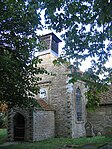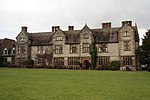Wilmcote railway station
Former Great Western Railway stationsRailway stations in Great Britain closed in 1907Railway stations in Great Britain opened in 1860Railway stations in Great Britain opened in 1907Railway stations in Warwickshire ... and 5 more
Railway stations served by Chiltern RailwaysRailway stations served by West Midlands TrainsUse British English from January 2017Warwickshire building and structure stubsWest Midlands (region) railway station stubs

Wilmcote railway station serves the village of Wilmcote, about 4 miles (6.4 km) north of Stratford-upon-Avon in Warwickshire, England. The station is run by West Midlands Trains. It is served by both West Midlands Railway and Chiltern Railways trains.
Excerpt from the Wikipedia article Wilmcote railway station (License: CC BY-SA 3.0, Authors, Images).Wilmcote railway station
Featherbed Lane, Stratford-on-Avon
Geographical coordinates (GPS) Address External links Nearby Places Show on map
Geographical coordinates (GPS)
| Latitude | Longitude |
|---|---|
| N 52.2226 ° | E -1.7559 ° |
Address
Wilmcote
Featherbed Lane
CV37 0ER Stratford-on-Avon
England, United Kingdom
Open on Google Maps









